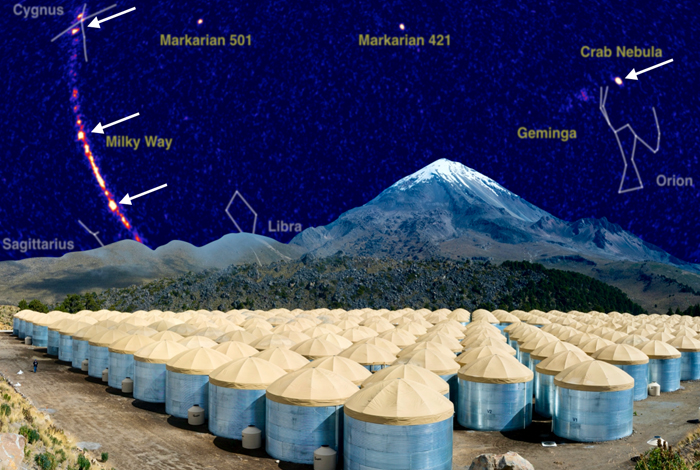Los Alamos National Laboratory issued the following announcement on Mar. 30.
New measurements confirm, to the highest energies yet explored, that the laws of physics hold no matter where you are or how fast you’re moving. Observations of record-breaking gamma rays prove the robustness of Lorentz Invariance – a piece of Einstein’s theory of relativity that predicts the speed of light is constant everywhere in the universe. The High Altitude Water Cherenkov observatory in Puebla, Mexico detected the gamma rays coming from distant galactic sources.
“How relativity behaves at very high energies has real consequences for the world around us,” said Pat Harding, an astrophysicist in the Neutron Science and Technology group at Los Alamos National Laboratory and a member of the HAWC scientific collaboration. “Most quantum gravity models say the behavior of relativity will break down at very high energies. Our observation of such high-energy photons at all raises the energy scale where relativity holds by more than a factor of a hundred.”
Lorentz Invariance is a key part of the Standard Model of physics. However, a number of theories about physics beyond the Standard Model suggest that Lorentz Invariance may not hold at the highest energies. If Lorentz Invariance is violated, a number of exotic phenomena become possibilities. For example, gamma rays might travel faster or slower than the conventional speed of light. If faster, those high-energy photons would decay into lower-energy particles and thus never reach Earth.
The HAWC Gamma Ray Observatory has recently detected a number of astrophysical sources which produce photons above 100 TeV (a trillion times the energy of visible light), much higher energy than is available from any earthly accelerator. Because HAWC sees these gamma rays, it extends the range that Lorentz Invariance holds by a factor of 100 times.
“Detections of even higher-energy gamma rays from astronomical distances will allow more stringent the checks on relativity. As HAWC continues to take more data in the coming years and incorporate Los Alamos-led improvements to the detector and analysis techniques at the highest energies, we will be able to study this physics even further,” said Harding.
Original source can be found here.

Source: Los Alamos National Laboratory
 Alerts Sign-up
Alerts Sign-up